Turkey: From Anatolia to the Ottoman Empire: The Definitive Guide for Travellers
Turkey: From Anatolia to the Ottoman Empire | Small group history tours Turkey The Ottoman Empire, also historically known in the West as the Turkish Empire, was a superpower that lasted for 600 years. Parcelled…
16 Jan 23 · 11 mins read
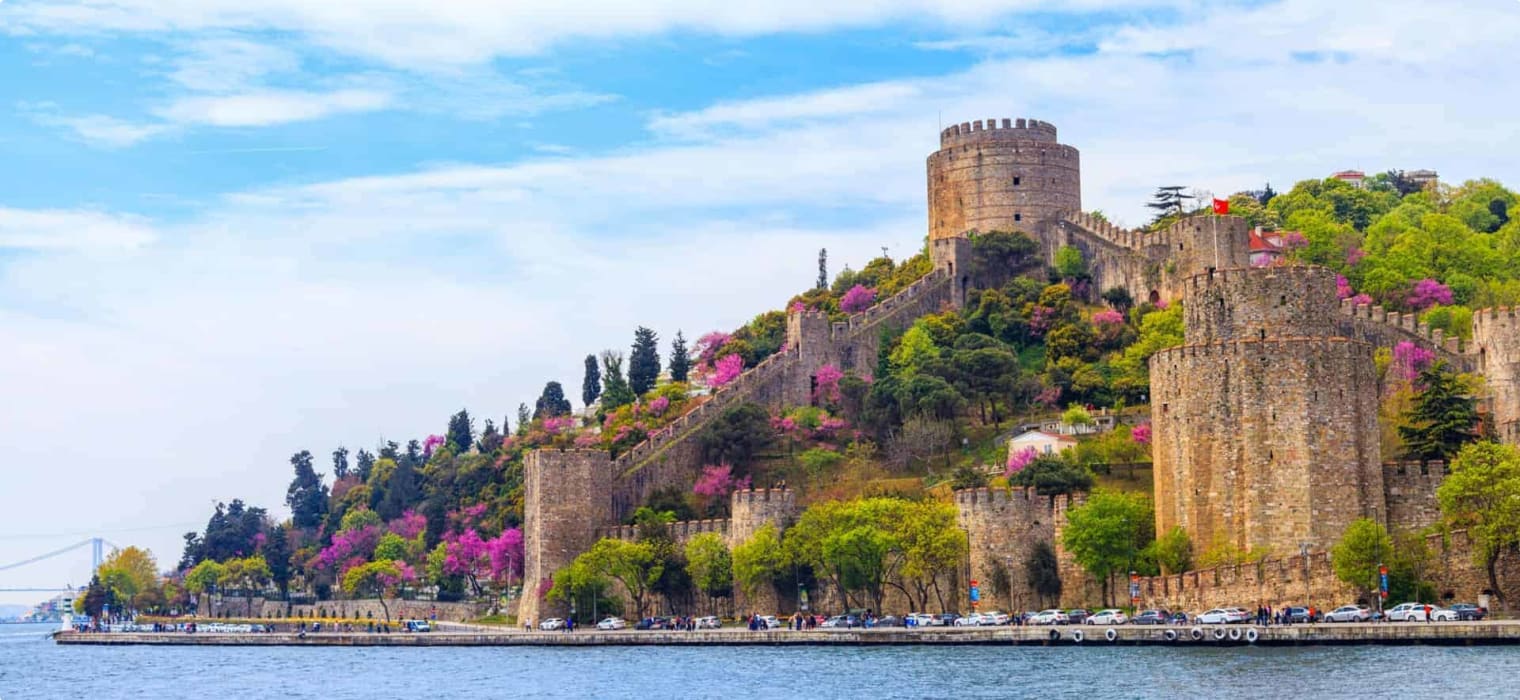
Turkey: From Anatolia to the Ottoman Empire | Small group history tours Turkey
The Ottoman Empire, also historically known in the West as the Turkish Empire, was a superpower that lasted for 600 years. Parcelled out among the victorious Allied nations after the First World War, the empire was replaced by the Republic of Turkey and various successor states in the 20th century.
Its enormous influence can still be felt today. It was once the power uniting a vast territory that included
most of southeastern Europe to the gates of Vienna, including present-day Hungary, the Balkan region, Greece, and parts of Ukraine; portions of the Middle East now occupied by Iraq, Syria, Israel, and Egypt; North Africa as far west as Algeria; and large parts of the Arabian Peninsula. (Yapp & Shaw, source)
Norman Stone in Turkey: A Short History (Thames & Hudson, 2017) calls the Ottoman Empire a “spectre haunting the modern world” (p. 6).
This article will trace the origins of the Ottoman Empire and follow its expansion up to Sultan Selim I’s territorial acquisitions in the Arab world. Stone’s Turkey is a relevant resource, and you can also read our previous articles about the Ottoman Empire:
If you’re eager to visit Turkey, you may also be interested in some of our lists:
- Ten Unimaginable Destinations (including the underground city of Derinkuyu)
- Ten Books for Travellers to Turkey
- Ideas for Visiting Turkey
Anatolia
As we’ve written before, the term “Ottoman” was derived from the Arabic name–“Uthmān”–of Osman I, the Turkish chief who founded the dynasty and empire around the 1300s. But let’s look further back.
Stone says “early Turks do not leave a literary trace and you have to study them using outside sources” (p. 18). As far as historians can tell from these sources, much of modern-day Turkey emerged from a historical region called Anatolia, also known as Asia Minor.
As a region at the meeting point of the Asian and European continents, it came with many names. According to Joshua J. Mark (2018), the earliest written reference to the region came from the Akkadian Dynasty tablets, dating back to circa 2334 BC where it was referred to as “The Land of the Hatti”, inhabited by the Hittites. The Hittites, in turn, called the land “Assuwa” or “Aswiya”, the probable origin of the Roman term “Asia.” The Greeks called it Anatolia, “place of the rising sun”, as it lies to the east of Greece.
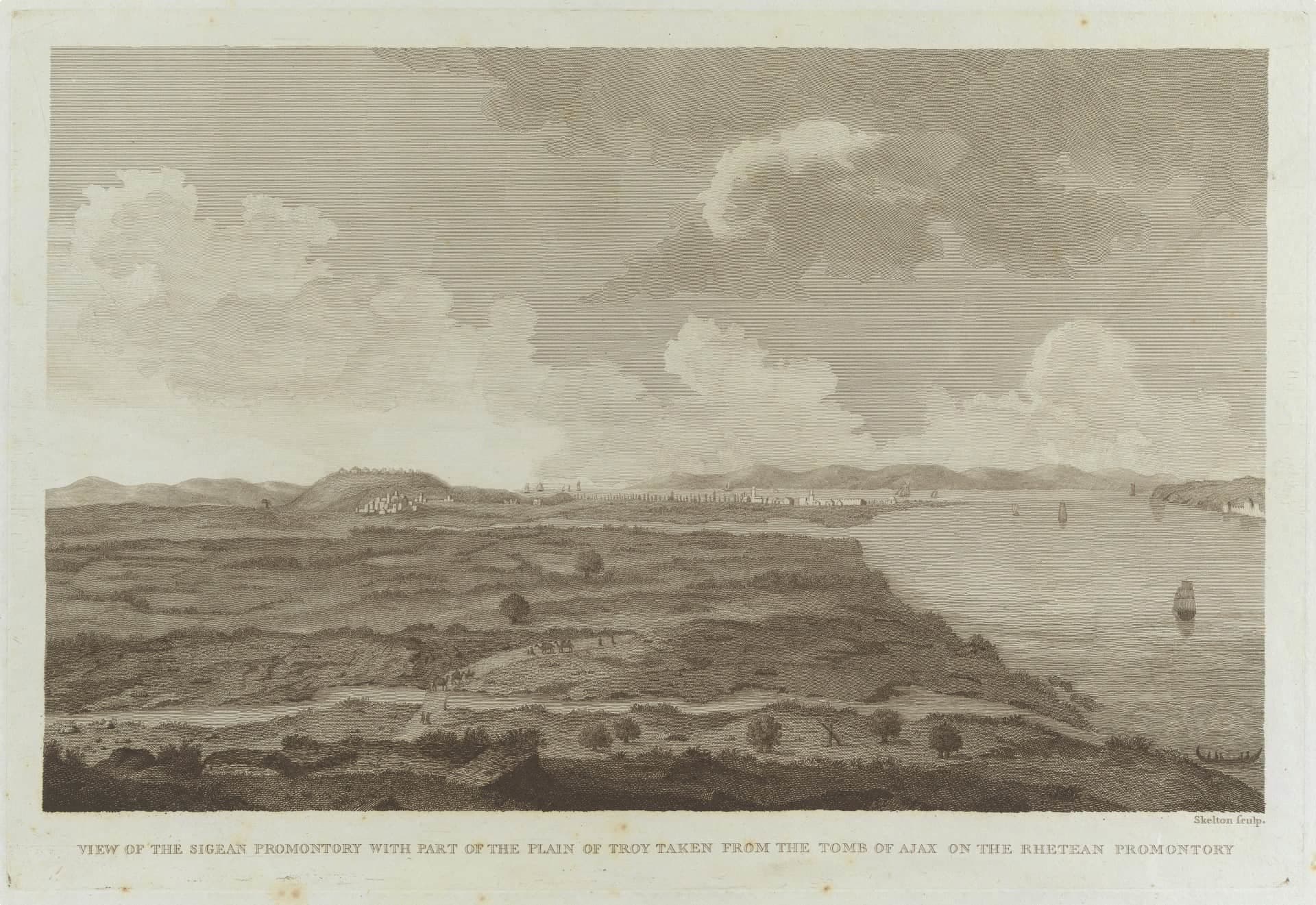
Ancient civilisations rose and fell in the region throughout the centuries, the Hittite Empire replaced by the Achaemenid Empire of Persia, which clashed with the Greeks. (You can read more about the Persian/Greek clash in our article on Athens.) The Achaemenid Empire’s control over Anatolia was dismantled by Macedonia’s Alexander the Great, but his untimely death fragmented his empire, Anatolia broken up between Ptolemaic Egypt and the Syrian Seleucids.
The rise of the Roman Empire led to Anatolia falling under Roman rule in the 1st century BC. When the western arm of the Roman Empire fell in 476 AD, the Eastern, Byzantine arm remained, ruling over much of Anatolia from the imperial seat of Constantinople.
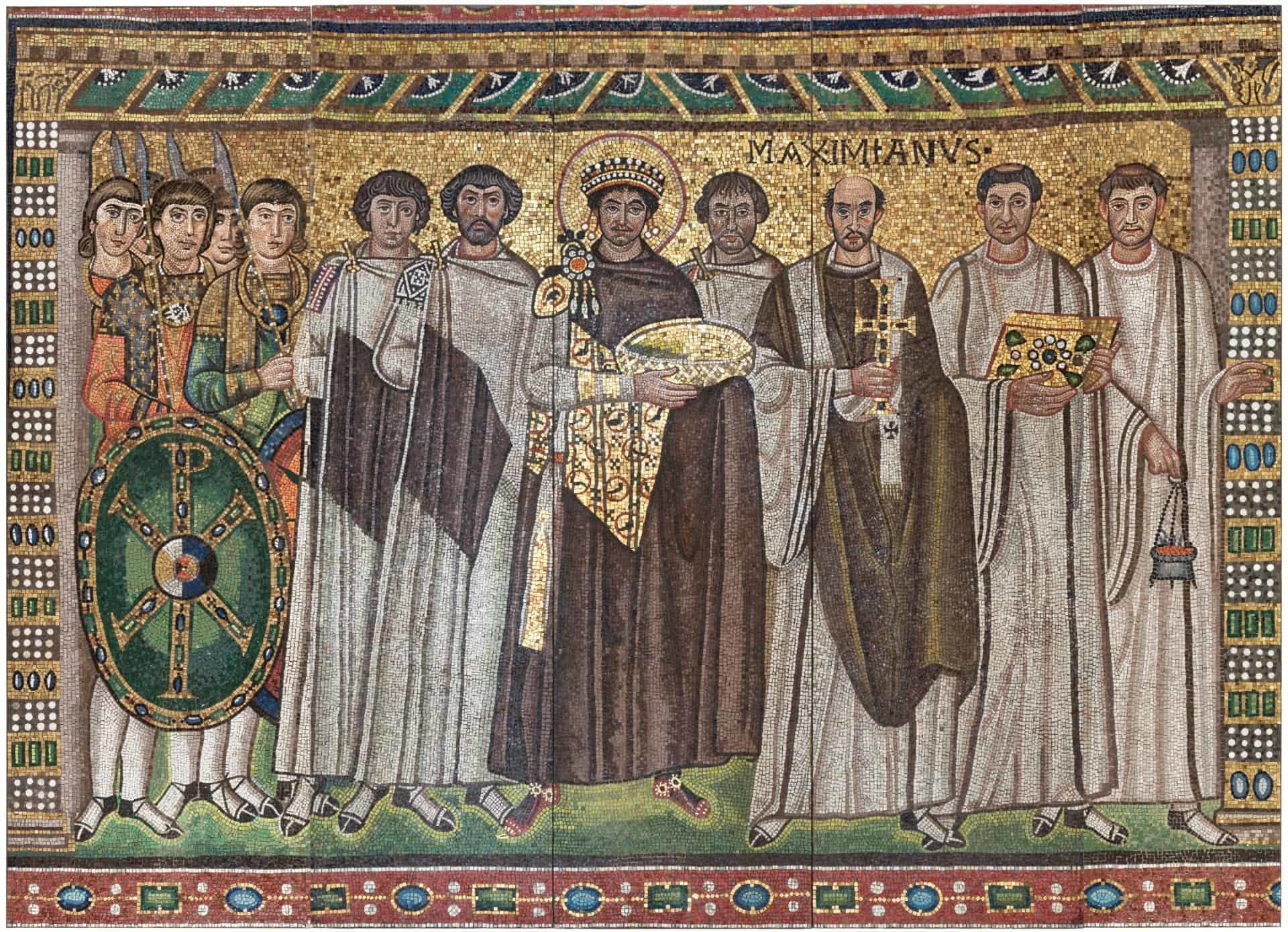
Anatolia, ruled by a Christian empire, would be subjected to various raids from Islamic powers beginning in the 7th century. The Seljuks would eventually bring an end to Byzantine rule over the region.
The legacies of Greek and Roman rule can today be seen at the archaeological site of Ephesus, in western Anatolia. In ancient times Ephesus was home to the Temple of Artemis, regarded as one of the “Seven Wonders of the World”. The temple attracted tourists from around the Ancient Mediterranean, and Ephesus later became an important Christian pilgrimage site. The ruins of Ephesus are today listed as a UNESCO World Heritage Site in recognition of their cultural and historical importance.
The Seljuks
Who were the Seljuks? The name of the tribe and the ruling dynasty came from the name of its leader (also spelled Seljuq). The Seljuks, like other Turkic peoples, migrated into Central Asia from their original homeland in the Altai mountains, located in the western region of modern-day Mongolia. “Turk” (“strong man”) was the name of the dominant tribe, and the first written reference to them is tyu-kyu (Stone, 2017, p. 16) or tu-kin, recorded by the Chinese in the 2nd century BC.
According to Akhilesh Pillalamarri (2016) on The Diplomat, in the 11th century, the Turks began settling on the edges of Anatolia. Many of the Turks worked as mercenaries for local Arab and Persian rulers east of the Byzantine Empire and Armenia, the dominant states at the time in Anatolia. The Seljuks were part of the frontier defence forces of the Samanid dynasty which ruled over what is now Iran and part of Uzbekistan, and later of Sultan Mahmud of Ghazna, a kingdom which included present-day Afghanistan and northeastern Iran. The Seljuks followed Sunni Islam. (You can read more about the difference between Shia and Sunni Islam and its effect on Armenia in our article here.)
In time, Seljuk’s descendants established their own territories. In 1037, they founded an independent state northeast of what is now Iran, and the warriors began encroaching upon the Armenian principalities, prompting Armenian princes to appeal to Constantinople (and even eventually give up their territories) for protection.
For nearly three decades, the Seljuks carried out offensives against the Byzantines in Anatolia, culminating in the Battle of Manzikert on August 26, 1071, during which the second Seljuk sultan Alp Arslan (in Turkish, “Heroic Lion”) defeated the Byzantine army and captured Emperor Romanus IV Diogenes. It effectively marked the end of Byzantine rule and the beginning of Seljuk domination in Anatolia.
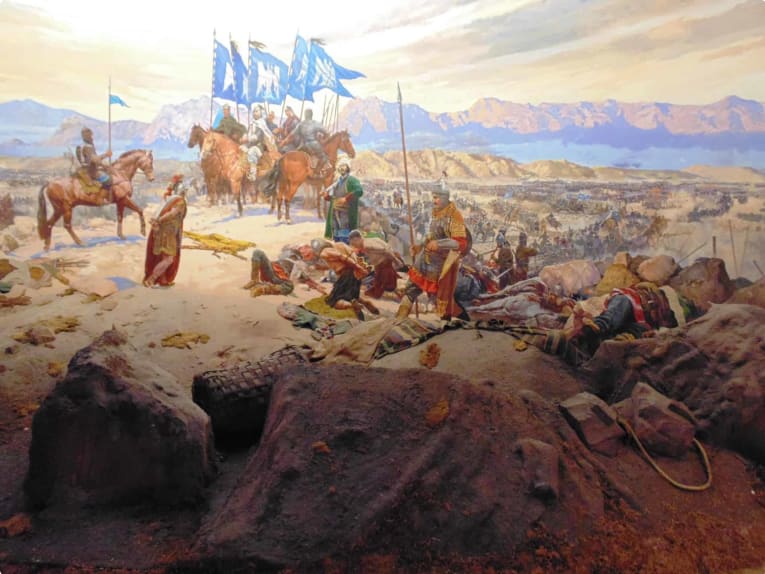
The Rūm Sultanate
At its height, the Seljuk empire would grow to include Mesopotamia (historical region in western Asia) and most of Persia (Iran) and territories of what is now Syria and Palestine. The dynasty would leave a strong legacy, particularly in the practice of Islam in the region. According to A.C.S. Peacock, writing for the University of Edinburgh, the Seljuks founded Islamic religious schools (madrasahs) to train state administrators and religious scholars, and styled themselves as defenders of Sunni Islam. (Shia Islam was the form practised by the Fatimids of Egypt, a main rival.) As a minority culture ruling over majority Persians and Arabs, the Seljuks incorporated the cultures of the people they ruled to maintain peace. They called themselves “sultans”, an Arabic title signifying power, and adopted the language of their Persian instructors, making Persian the lingua franca of the empire.

Shortly after the decisive Battle of Manzikert, Seljuk commander Suleiman ibn Qutulmish, whose father was a cousin of Alp Arslan, came to power in western Anatolia. He, like his father, was unsuccessful in getting the Seljuk throne from Alp Arslan. So he built his own kingdom.
Initially siding with Byzantine leaders trying to capture the Byzantine throne, Suleiman in 1075 seized the Byzantine cities of Nicaea (now Iznik, Turkey), and Nicomedia (now Izmit, Turkey) for himself. In 1077, he declared himself sultan of an independent Seljuk state called Rūm (“Rome”), the designation used by Arab historians to refer to the Byzantine Empire. Rūm, with its capital in Nicaea, is considered the roots of the present region of Turkey, and would survive the Seljuk empire’s fall in the 12th century.
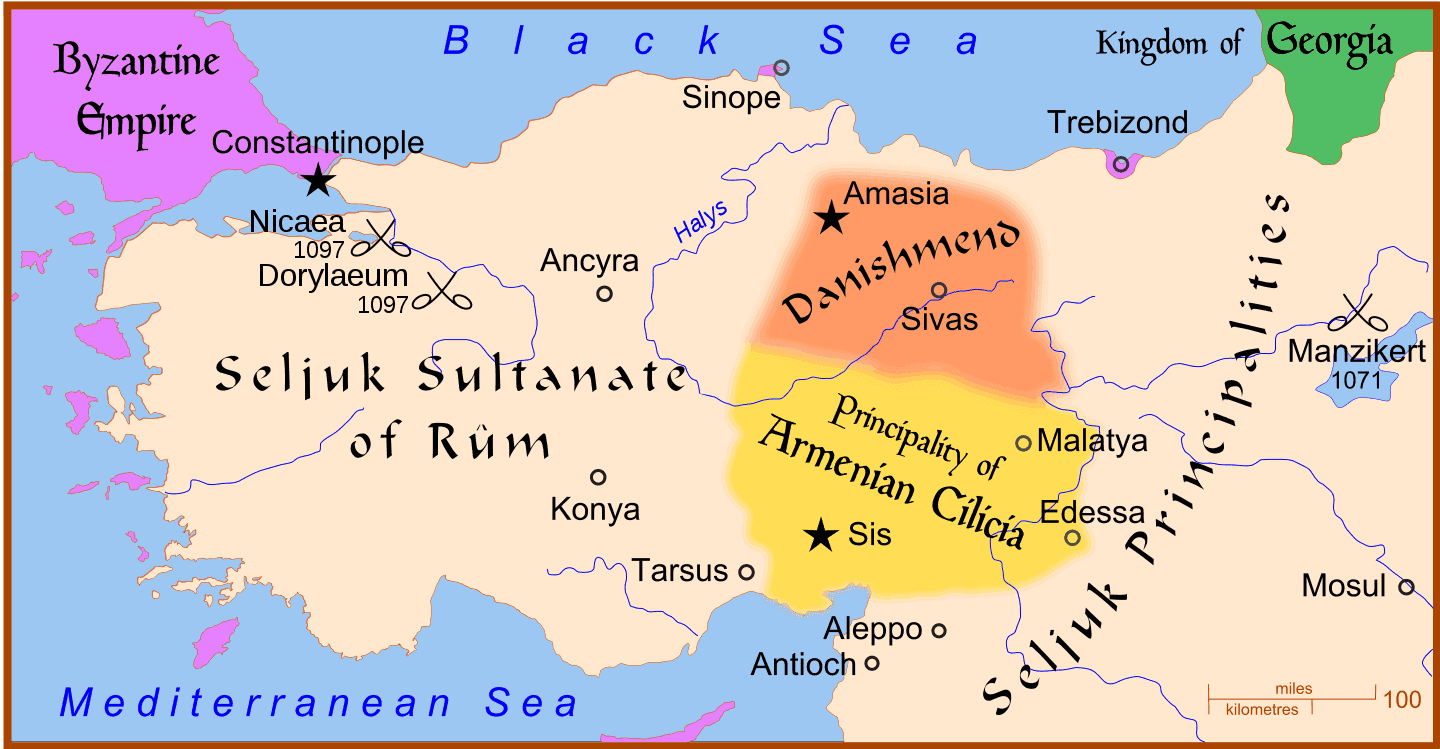
The Seljuk empire fell around the 1200s due to infighting and clashes with competing dynasties, but the Sultanate of Rūm remained in place in Anatolia, conquering Byzantine ports and the territories of rival Turkic dynasties. However, the sultanate bore the brunt of the European crusaders, who entered Anatolia on their way to Jerusalem to liberate the Holy Land from the Fatimids of Egypt. The Fourth Crusade would eventually establish the short-lived Latin Empire in Constantinople in 1204.
While the Seljuks were fighting off the crusaders, another great army was building in the region. On June 26, 1243, the Seljuks faced a Mongol army led by Genghis Khan’s grandson, Hulegu Khan, at Köse Dağ (northeastern Turkey). The Mongol army emerged victorious, and it was the beginning of the end of Seljuk rule in Anatolia.
Mongols
The Seljuk Sultanate became a vassal state of the vast Mongol empire. In 1259, the empire fractured into four territories: the Golden Horde in the northwest, the Chagatai Khanate in the middle, the Ilkhanate in the southwest, and the Yuan dynasty in the east based in modern-day Beijing. Anatolia fell under the Ilkhanate, led by Hulegu Khan, who ruled Anatolia through military governors. The last Seljuk sultan, Mesud II, died in 1308.
After the Seljuk defeat at Köse Dağ, the other Turkish clans moved west and established minor states called beylik on former Seljuk and Byzantine territories. One beylik was the small state of Söğüt in northwest Anatolia. This state, led by a Turkish chief named Osman, would grow to become the Ottoman Empire.
The Ottomans

Osman was initially a liege lord of the more powerful Chobanid beylik. When the Chobanids made peace with the Byzantines, Turkish troops rallied behind Osman, who declared his independence and set up his own beylik.
Söğüt was right on the edge of the Byzantine border. From here, Osman led incursions into territory held by the Byzantine Empire, which at the time was also dealing with internal conflict and the decline of its frontier defences. Osman and his descendants took advantage of the chaos and began to capture land beyond their tiny state, even forging an alliance with aggrieved Byzantine leaders (which, as we remember, was what Suleiman ibn Qutulmish did to create the Rūm Sultanate). For example, in 1341, when Byzantine Emperor Andronicus III died, his chief adviser John VI Cantacuzenus had a dispute with John V Palaeologus and his mother regarding his claim to the throne. To secure victory, John VI allied with the Ottomans, even marrying his daughter to Orhan (Osman’s son).
This gave the Ottomans a foothold in Constantinople and the rest of Europe. They took Gallipoli and moved south to Adrianople (Edirne, Turkey), Byzantine’s second major city, despite Cantacuzenus’ protests. The Ottomans made Adrianople its capital.
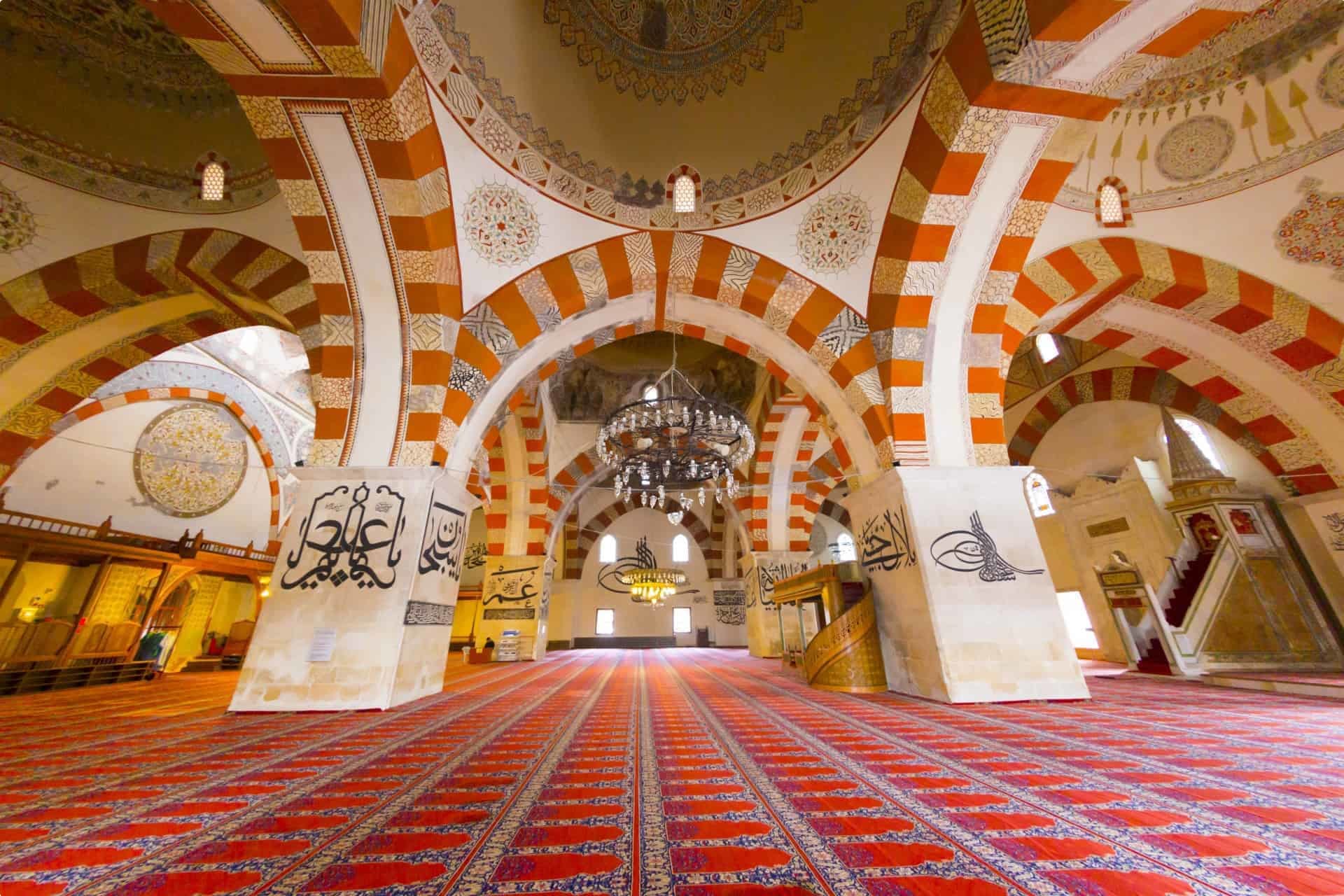
The Byzantine capital, Constantinople, was bypassed because at the time the Ottomans lacked siege equipment to take the city. The young Sultan Mehmed II, ascending the throne in 1451, purchased cannons designed by Hungarian inventor and engineer Orban, and successfully blasted through the walls of Constantinople on April 6, 1453, finally capturing the city on May 29, 1453 after a 53-day siege. Christian Constantinople was renamed “Istanbul” (city of Islam) and became the new centre of the Ottoman Empire. (You can read more about it here.)
Mehmed II, who was only 22 when he marched victorious into Constantinople, ordered the building of the Topkapi Palace, which would serve as the administrative centre and residence of the Ottoman Sultan and his court from about 1478 to 1856, when the court moved to the lavish Dolmabahce Palace.
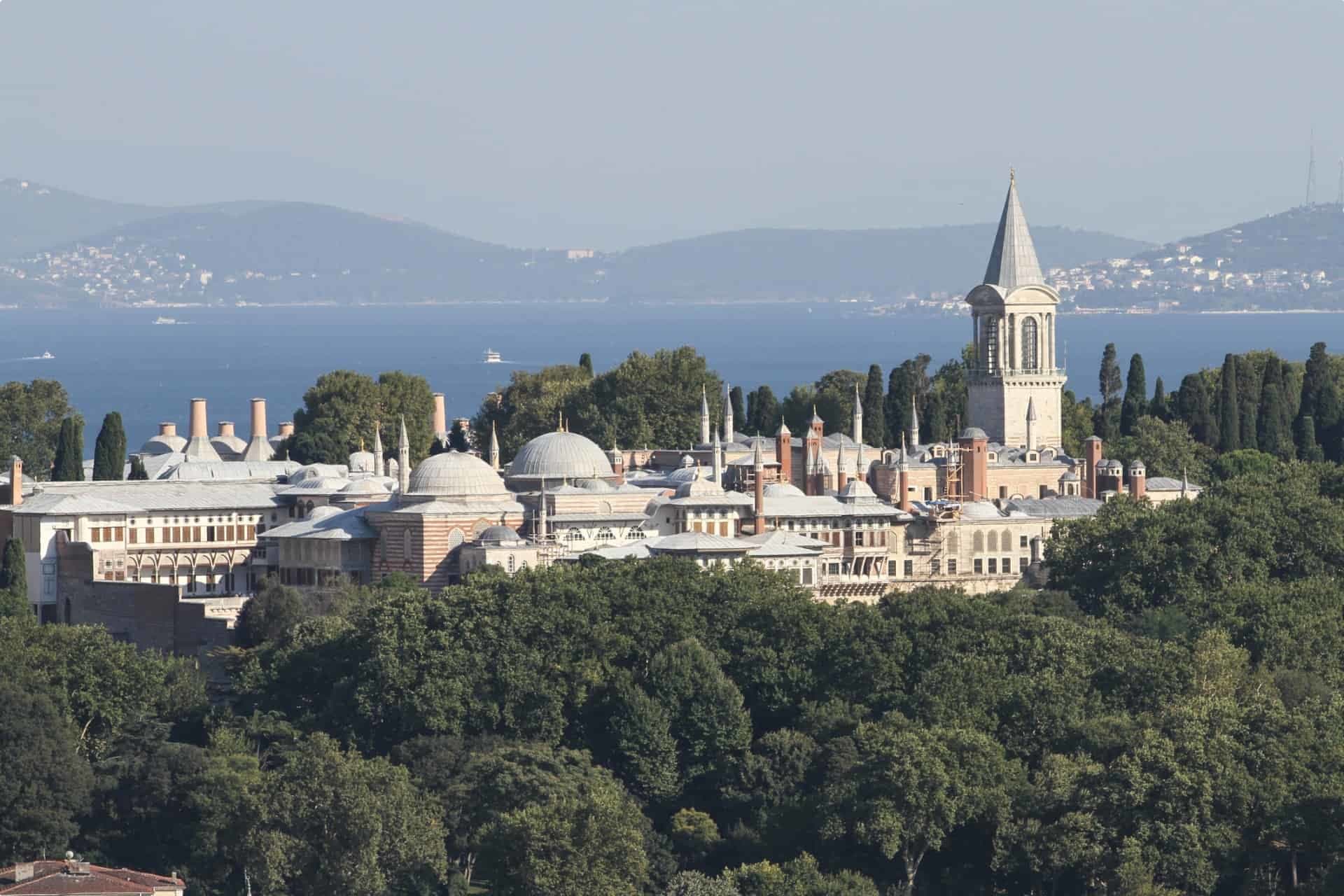
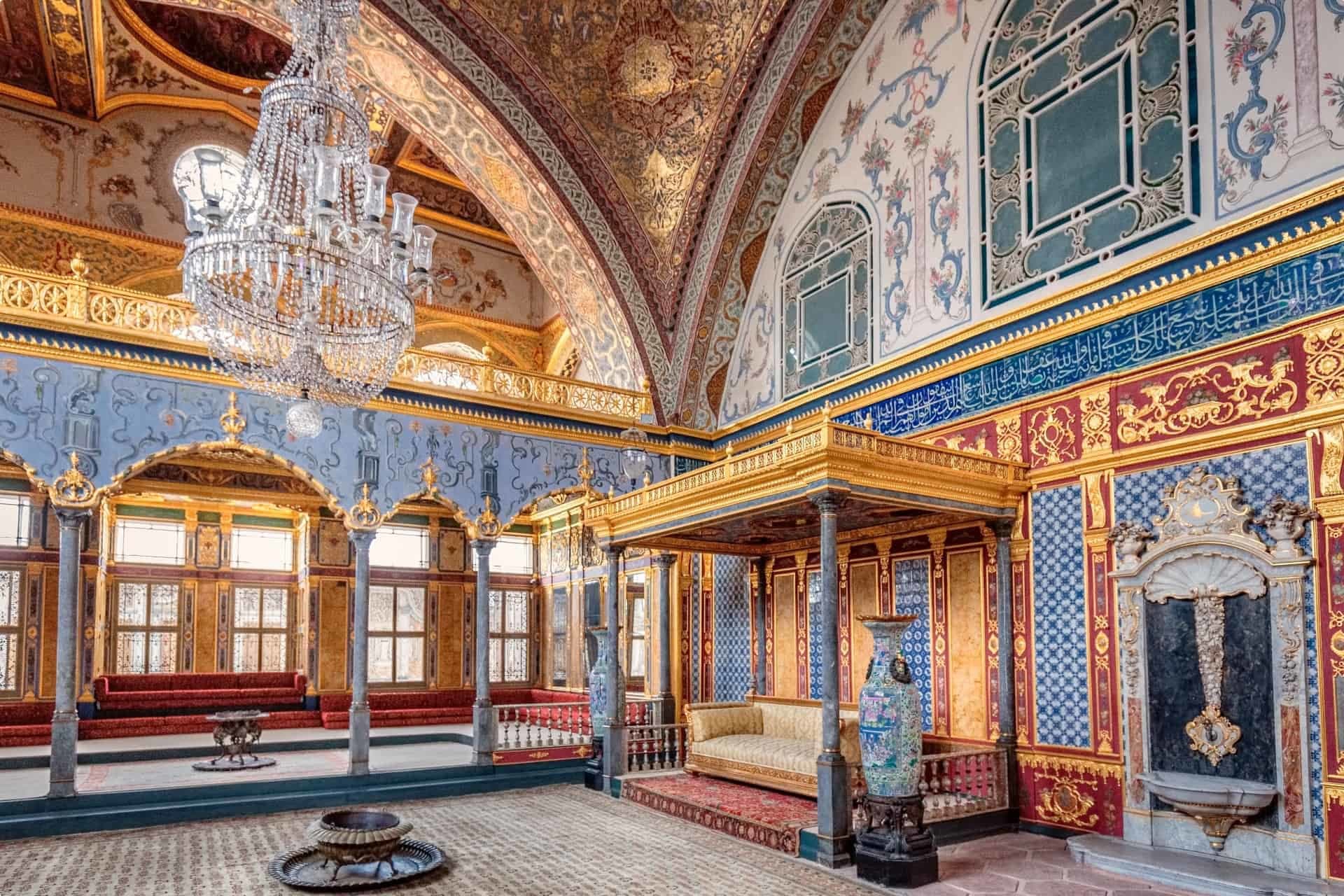
The reign of his successor, Bayezid II, was largely a period of rest in the Ottoman Empire, after years of near-constant warfare and expansion. Bayezid was also described as peaceful, and carried out military operations with reluctance. Nevertheless, in 1499 he went to war with Venice and captured their ports to control the eastern Mediterranean, making the Ottomans a formidable naval power.
Bayezid’s son, Selim I, was more aggressive, so aggressive that he sent his father away to die in exile (Stone, 2017, p. 47) and killed all potential heirs (including his own brothers and sons) save for a lone successor, his son Suleyman. Selim I’s byname was Yavuz, “The Grim”. In a year-long campaign, Selim the Grim successfully captured the territories controlled by the Mameluke dynasty, taking control of Egypt and Syria and effectively doubling the size of the Ottoman Empire, making it the major power in the Muslim world.
Selim I took the titles “King of the Two Continents, Ruler of the Two Oceans, Conqueror of the Two Armies (European and Persian), and Servant of the Two Holy Shrines (Mecca and Medina)” (Stone, 2017, p. 49). His surviving son Suleiman the Magnificent would add more to these grandiose titles as he continued the conquests.
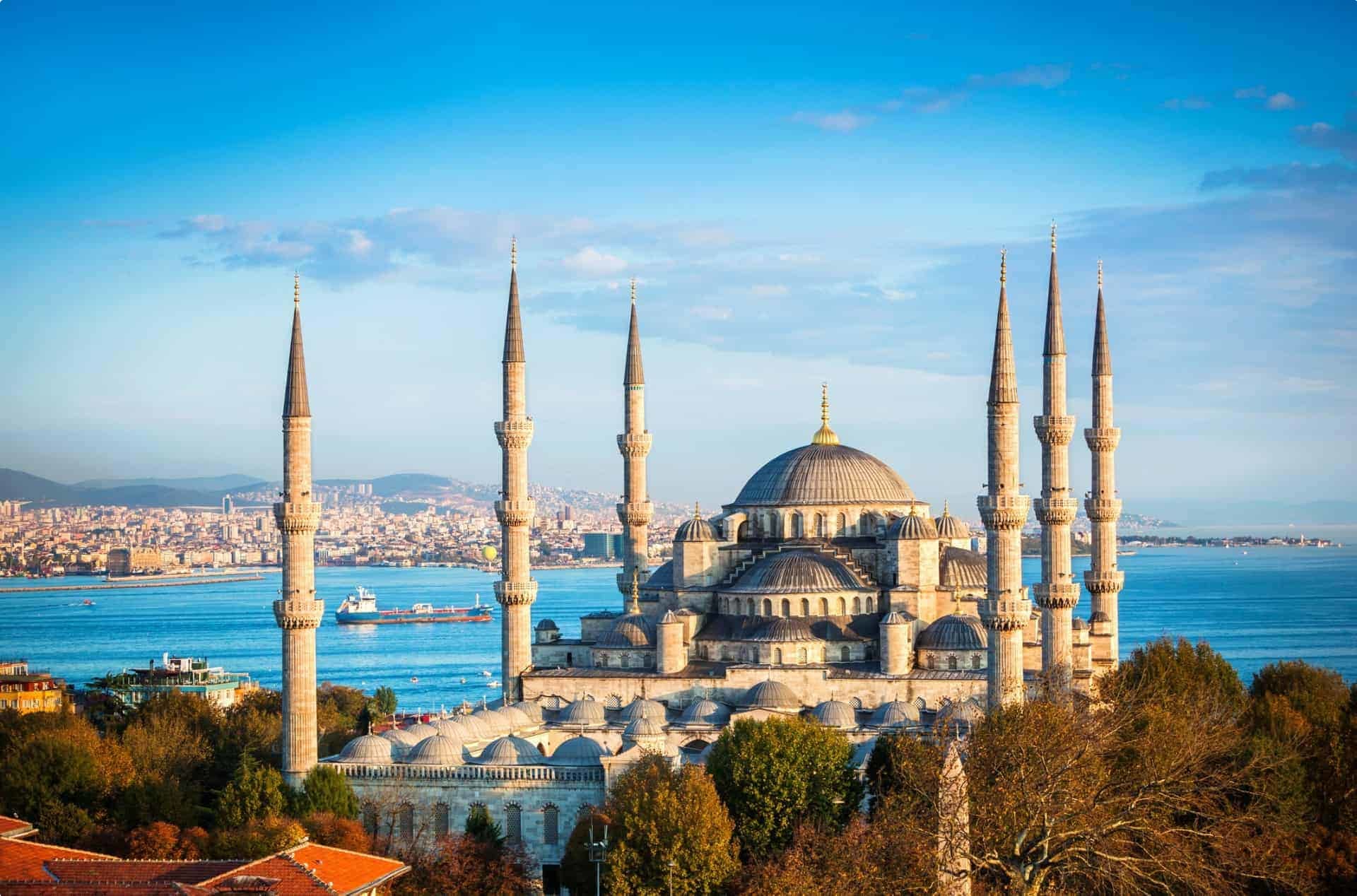
Key Themes of the Ottoman Empire
The Ottoman Empire would grow to be on the great successful empire of all time. At its peak, during the reign of Suleiman the Magnificent, it stretched three continents, from Iraq to North Africa and Arabia to the Balkans. It comprised of somewhere between 18 and 24 million people over 1.5 million square miles. It was ruled by sultans, whose influenced stretched even wider, acknowledged as the head of the Sunni Empire, with even the Mughal Empires in India bowing to their authority.
Beginning with Selim Yavuz, the sultans styled themselves as padishah and caliph, piously bound by the strictures of Islam to rule as the heirs of the Abbasid caliphs. As the faith of the sultan and the majority of his subjects, Islam played a central role in the empire and was a great cultural force. It was crucial in defining the visual arts, aesthetics, and literary arts in what was a great period of flowering for Islamic artistic achievement and also scholarship. Indeed, as Harl writes, “The cultural power of Islam in the Middle East today, as well as the identification of Muslims with the faith, owes much to the Sunni Islam championed by the Ottoman sultans.”
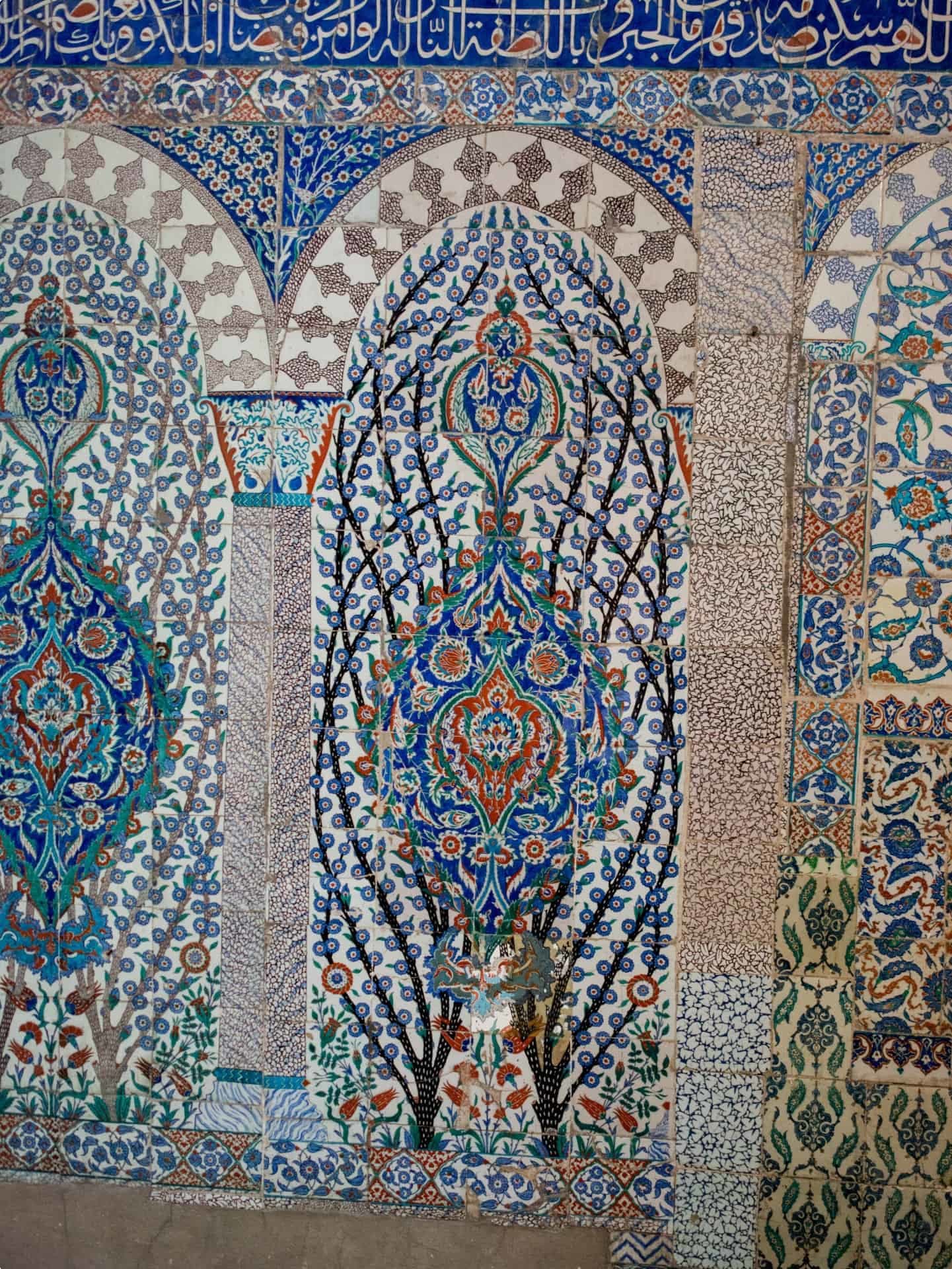
Scholars of the Islamic world have long cautioned about Western perceptions of Orientalism – prejudiced and distorted views of Islamic civilisation. Orientalism has its origins in the Crusades ever since Pope Urban II provoked Christian Europe to holy war by images of “Turkish atrocities” committed against eastern Christians in the late 11th century. From the get-go, Christians found it difficult to comprehend Islam as an independent Abrahamic religion rather than a later heresy.
The success of the Ottoman Empire only worked to arouse greater fears and curiosity amongst Europeans. A great series of wars would be fought between the two, starting with the crusades in the 14th century, down to World War One. But for European travellers and philosophes this was also an exotic and fantastic setting, an eternal and unchanging world.
The “terrible Turks” were also looked upon as a great power. The awesome power of the Ottoman sultans was expressed by the phrase “Sublime Porte,” denoting the high gate (Bab-ı Ali) within Topkapı Palace where the sultan or his vizier received foreign dignitaries. This was a powerful image which connoted great opulence.
These images of power and opulence and a rival religion endured for centuries, until over the course of 18th century as the Ottomans suffered a succession of defeats against Catherine the Great of Russia and Napoleon. The Ottoman Empire as the “sick man of Europe” – a decrepit empire inviting partition by the Great European powers – had replaced the image of the Sublime Porte.
It was at this point the Ottoman Empire was faced with the question of whether to westernise or modernise as a way to cope with the rise of the West. This debate was a central issue amongst reformers of the late Ottoman state and continues to be debated today amongst successor states in the Balkans and Middle East.
If you want to learn more, do listen to Kenneth W. Harl’s audiobook The Ottoman Empire, and read Norman Stone’s Turkey: A Short History (Thames & Hudson, 2017), both of which covers the rise and fall of the Ottoman Empire. You can also check out the articles linked throughout this piece.
Visit Turkey with Odyssey Traveller
Odyssey Traveller organises cultural tours to Turkey. Our tours take you from Istanbul to Cappadocia in eastern Turkey, before winding back up along the west coast. On our journey, you will see many of Turkey’s most important historical sights: the Topkapi Palace, the Hagia Sophia, the Blue Mosque, and the Goreme Open Air Museum. Our trip also includes a walking tour through the ruins of ancient Ephesus. In order to ensure you have a memorable trip, our private tour takes a cruise down the Bosporus and visits the Grand Bazaar of Istanbul.
On our trip, we provide hotel accommodation along with a number of meals – breakfast, lunch, and dinner – so that you have many opportunities to try the many delicious varieties of Turkish food. In order to ensure an authentic and informed travel experience, our tours are led by an expert tour manager, and joined by experienced local tour guides. Click here to see the full itinerary and sign up.
Originally published October 2, 2019.
Updated on January 16, 2023.
Related Tours
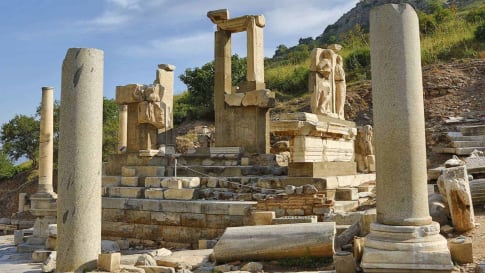
21 days
Aug, AprSmall group tour of Ancient Turkey
Visiting Turkey
As a travel company we seek to keep guests off the beaten path. Trips that are remembered for authentic experiences. Our small group journeys in Turkey are fully escorted by an experienced local guide and an Odyssey guide to give this type of experience whether at one of the many UNESCO World heritage sites explored or local bazaars. It is always about the adventure and memories that we will create.
From A$17,295 AUD
View Tour


